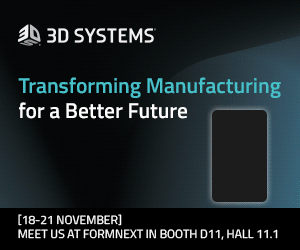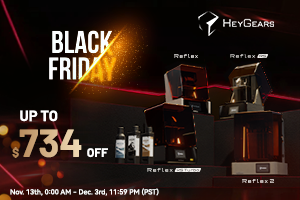

As the end of the year approaches, the additive manufacturing industry gathers in Frankfurt for the biggest event of the year: Formnext. For a week in November, the entire world of additive manufacturing, machine vendors, material providers, post-processing specialists, service bureaus and software developers showcase their latest products and development.
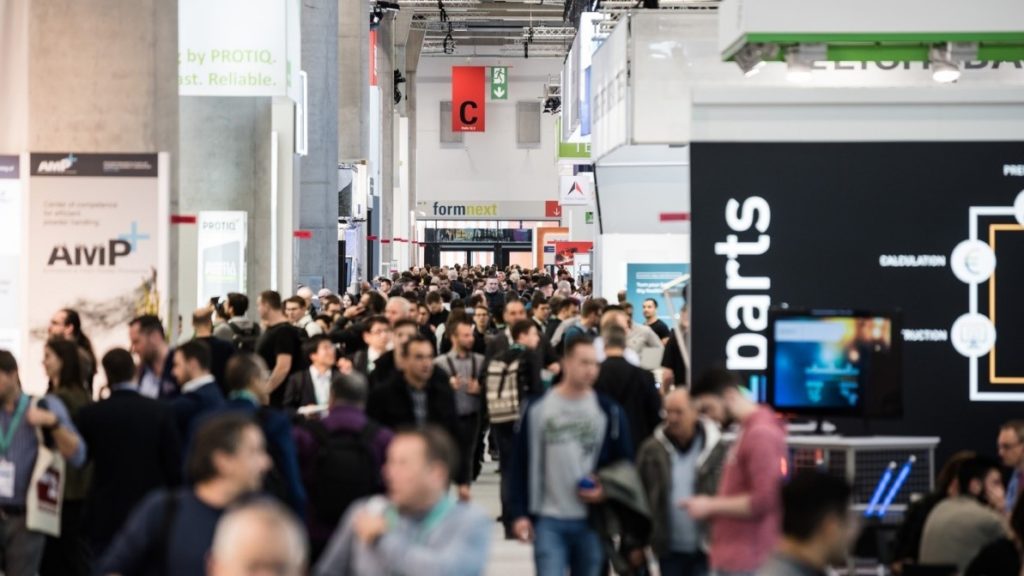
Like every year it’s the occasion for the traditional actors to show that they are the big players and compete on having the biggest stand of the show, and for everybody to unveil their latest machine, material, software, or partnership. It is the main occasion for companies to make announcements and to shine in front of an ever-expanding crowed of professional visitors.
The 2019 edition of this yearly gathering was by far the biggest ever: 852 exhibitors representing 35% growth over the previous year and 34,500 visitors; 28% more than last year. In order to accommodate everybody, this year’s Formnext was split into four halls. It would take several days for a visitor to view and interact with all the companies exhibiting.
At Blueprint we try to keep a close eye on the industry, staying close to the news to be informed of the latest developments, new machines, and new companies on the market, but we were surprised by the number of company names we didn’t recognize. One might think that most of the new companies would be Asian companies trying to expand to the European market, but talking with the different newcomers we learned that a large number were established European machine tool specialists entering additive manufacturing. We were surprised to see the number of new machines that were very similar to existing technologies and very few new manufacturing processes. While the 2013 hype brought a lot of very similar desktop 3D printers, the recent news about AM successes in the end-use part manufacturing seems to have catalyzed a focus on new machines designed for manufacturing. While some are copying existing machines, including the same naming conventions, others are trying to keep the costs down by using standard off-the-shelf components. Surprisingly, every machine seems to have a level of engineering suggesting that heavy investment has been put into the projects; these are industrial companies making machines, not start-ups with little engineering experience and Kickstarter funding. But even with that obvious substantial investment, it is disappointing that the majority stick to imitating technologies invented 20 years ago rather than being truly innovative.
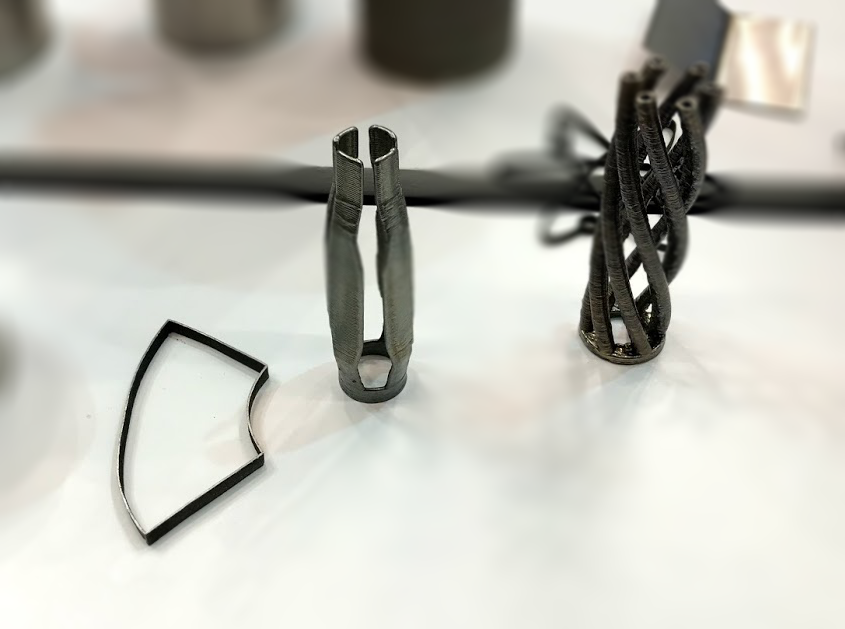
Stepping away from the actual machines and focusing on the parts on display, we started to have a very familiar feeling. While in the past some vendors have been guilty of showcasing parts made on competitors’ machines because their machine wasn’t ready, we don’t think that was the case here. The parts on display looked great, but a lot of them were just generic 3D printed designs available online, made to showcase the freedom of design of 3D printing but not demonstrating anything about the applications enabled by their machine. Once again this points to a lack of imagination and experience of those companies, most of them thinking they can just repeat what the competition has been doing years ago in order to be successful.
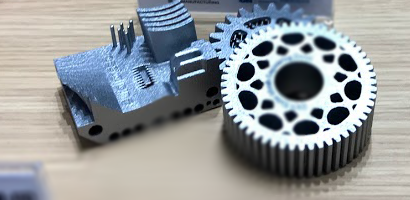
Just like that, we felt we were 5 years back in time, back when machine vendors slowly started to transition from prototyping machines to manufacturing machines. The biggest change was how manufacturers talk about their machines’ capabilities. While in the past we would hear about layer thickness, speed, heat tolerance, or strength, the conversation has evolved with the change of target market. When you are prototyping, you need machine capacity and you want to have a machine as flexible as possible to make the most diverse range of prototypes possible. Manufacturers are not inspired by the machine and material capacity, but more by the applications that machines enable. The message “Our new material has a heat deflection temperature of 150°C” became “Our material enables production of composite tooling for this type of resin matrix.”
In order to present machines as manufacturing tools, the established players have shifted to the business value proposition; most of them were showcasing case studies where a part enabled a customer to save money, compress a supply chain, or improve workers conditions. They were not selling machines but selling a solution to business problem using a machine.
On that front, we saw that many of the newcomers were at a disadvantage. None of them seemed to have figured out their differentiators or value propositions. Many are still trying to make machines to do everything and their only way to compete with the established players is on price. When price is your only differentiator, the only way to gain market share is to lower your price. Starting a race to the bottom is rarely a good idea, especially in a market as competitive as the additive manufacturing industry. We saw this happen to the desktop 3D printer market a few years ago and we can predict that a lot of the new entrants probably won’t exist anymore in a couple of years’ time.
Assuming the same 10% growth of the last 5 years, the number of industrial unit sales for 2020 is expected to be around 22,000. If we remove the market shares from historical players, large companies and unicorn startups, that leaves about 4,500 units to be sold worldwide by the new actors. Based on the Formnext 2019 exhibitor list, there are about 300 companies selling machines. That leaves each of these companies selling about 15 units with an average price of $50k.
Is an average revenue of $750k enough to keep most of those companies on the market? The answer to that question should be self-evident. Talking with people on the stands, we learned that some employees haven’t been paid for a few months, while other companies are hoping they can ship a machine by the end of next year. Even companies that investors have judged as successful by giving them unicorn status are struggling to get their machines out of the door. It is not rare to have to wait a couple of years between a machine announcement and the first public machine being installed. This is due to the complexity of having a capable and reliable machine suited for the industrial market. Showing that you can print a part is not enough for manufacturing; you must demonstrate that you can reach the same tolerances continuously. Cashflow then becomes critical for companies without initial backing. We suspect that the business plan of some of the new entrants might be to make announcement and enough noise to raise funding or be acquired. This can have a detrimental impact on our industry as it creates noise and confusion that distract potential customers from the real applications. We have seen many times customer deciding against buying a current, proven machine because they are waiting for the competitors one which was announced a year ago and is not coming out for another year.
Similar to the desktop market back in 2013, we can expect difficult times ahead for those newcomers and very fierce competition in the industrial market. With all the new entrants competing with very similar technology, the ones that can identify a clear differentiator and have a clear message on how they can solve a business problem will be the ones who stay afloat. Indeed, everyone needs to continue to improve additive manufacturing’s value proposition; remember, we are a small industry— 0.02% of manufacturing. Some say that 99.9% of people don’t understand 3D printing. This “noise” will hurt our industry; as professionals in the additive manufacturing space, it is our job to help articulate business value and educate our customers.
Loïc Le Merlus (Manager)
Loic leads the development of Blueprint’s algorithms that drive our proprietary analysis tools. He also works closely with many of our clients to analyze complex data and understand the economic impact that 3D printing and additive manufacturing could have on their businesses. In other words, he puts the numbers behind the hype. Loic has over 9 years leading projects to quantify the impact of the technology, working with users and vendors across the additive manufacturing industry.
Blueprint is an additive manufacturing consultancy, bringing together more than 15 years of knowledge and experience across the industry. As the world’s leading additive manufacturing consultancy, Blueprint regularly assists future-ready companies achieve additive success. Based in Eden Prairie, Minn., and Milford, U.K, the firm offers a unique, technology-agnostic perspective on all things additive, from strategic advice to design optimization services. More information is available online at www.additiveblueprint.com.
If you want to discuss this article or your additive manufacturing strategy, the team at Blueprint is here to help. Let’s say hello.
Subscribe to Our Email Newsletter
Stay up-to-date on all the latest news from the 3D printing industry and receive information and offers from third party vendors.
Print Services
Upload your 3D Models and get them printed quickly and efficiently.
You May Also Like
3D Printing News Briefs, June 28, 2025: Defense Accelerator, Surgical Models, & More
In this weekend’s 3D Printing News Briefs, 3YOURMIND was selected to join an EU Defense Accelerator, and PTC has announced model-based definition (MBD) capabilities within Onshape. Finally, a study out...
PostProcess CEO on Why the “Dirty Little Secret” of 3D Printing Can’t Be Ignored Anymore
If you’ve ever peeked behind the scenes of a 3D printing lab, you might have caught a glimpse of the post-processing room; maybe it’s messy, maybe hidden behind a mysterious...
Bassetti Weaves a Digital Thread through 3D Printing
According to the latest market research report from Additive Manufacturing (AM) Research, “AM Software Markets 2025: Analysis, Data and Forecast,” software is the next frontier for the sector. This segment...
Europe at a Crossroads: Transforming Challenges into Industrial Opportunities
Europe is awakening to its challenges, and with adversity comes opportunity. Our industries stand at a crossroads, ready to make transformative choices that will shape their future. While Europe faces...





















